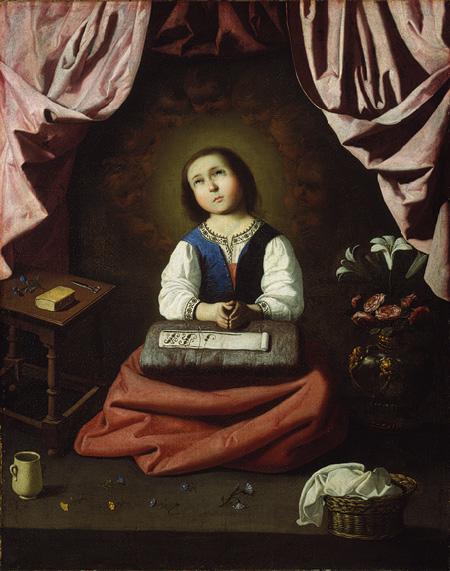
When Pauline Perdrau, a young French girl at the Trinità dei Monti in Rome in 1844, decided to paint on the wall of a corridor Mary as a young girl in the Jerusalem Temple, she did not pull the idea out of thin air. In fact, there was an already established artistic tradition of portraying Mary as a young girl in the Temple. But where did they get the idea of Mary living in the Temple? There is certainly nothing in the Scriptures to indicate such an odd practice.
The idea begins very early, however, perhaps as early as the middle of the second century of the Christian era, in the imaginative apocryphal gospel known as The Infancy Gospel of James (or Protoevangelium of James. In this anonymous Greek text, an unknown writer shows his or her devotion to Mary by composing a historical novel depicting imaginary incidents from the birth, childhood and espousal of Mary. The writer may be setting down stories that were already circulating in religious devotion. It is here that we learn the names of Mary’s parents, Joachim and Anna. It is here that we learn of Mary’s presentation in the Temple at the age of three, not to emerge until she was twelve. The inspiration for this idea is no doubt the biblical story of the boy Samuel serving the high priest Eleazar in the sanctuary at Shiloh when he experienced the nocturnal call of God to him (1 Samuel 1:28, 2:11, 3:1-18). One of Mary’s occupations during these years, according to the legend, was to weave the curtain of the Holy of Holies. Both Western and Eastern religious art has many representations of young Mary presented and living in the Temple. For example, the fourteenth century mosaics of Chora Monastery in Constantinople feature a long sequence of scenes from this cycle of stories.
Because this story about Mary was so well known and loved among the faithful, a feast was established to commemorate the event, the Feast of the Presentation of Mary on November 21. The celebration is as old as the sixth century in the East, and the ninth century in the West. This was the day on which St. Madeleine Sophie and her first companions made their first consecration in Paris in 1800. It thus became the date on which the Society of the Sacred Heart celebrates the anniversary of its founding. In some houses of the Society, there was a custom on November 21 that the youngest child in the school would process up the central aisle of the chapel in the presence of the whole school and community, who sang the appropriate hymn for the occasion:
The little Virgin Mary was only three years old When to her tender mother, this secret sweet she told. To go up to the Temple to serve her God alone, This was her soul’s desire, this secret she made known.
One of the best-known artistic precursors of Mater is The Young Virgin by Francisco de Zurbarán (1632-1633), now in the Metropolitan Museum in New York. She is younger than Mater, but similarly caught up in prayer from her needlework. The lily and work basket are already there, and the background curtains are pink. Pauline Perdrau was inspired by her own love of Mary, but she also knew something of the artistic tradition, to which she made a lasting contribution.
By Carolyn Osiek, RSCJ, inspired by materials from Muriel Cameron, RSCJ, and Sophie Cooney, RSCJ



